
|
Explorations of Strecker's Giant-Skipper
Megathymus
streckeri texanus Barnes and McDunnough, 1912
|
Megathymus streckeri texanus is a rarely observed Giant-skipper from the Edwards Plateau of Texas. These images were taken on 30-Mar-2008 in the Pedernales Falls State Park, Blanco Co. TX. We are grateful to the Texas Parks and Wildlife Department for the permit #08-02 Rev making the work documented here possible. |
|
All images are © Nick V. Grishin |

|
Hilly, rocky place with larval hostplant Yucca rupicola is a typical habitat of Megathymus streckeri texanus in Pedernales Falls State Park, Blanco Co. TX. March 30th is a good time to search for the skipper tents, as most tunnels contain pupae. |

|
Two larval tents are located at the base of this small yucca shoot. Area framed in yellow is enlarged below: |

|
The tents do not extend much above the surface and look like two small humps. Some white webbing may be seen in between the leaves and stones, in particular in the tent 1. |

|
However,
when the tents are opened, obvious tunnels leading underground are
revealed. |
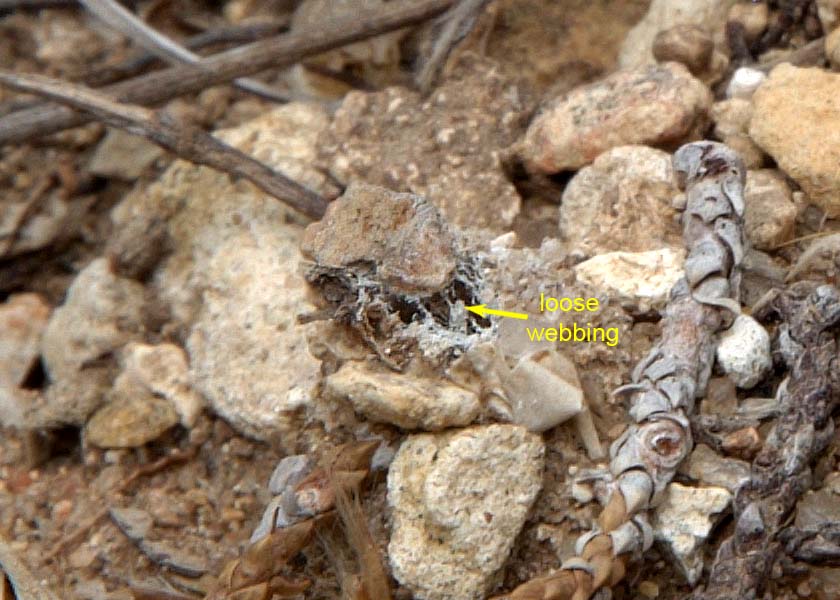
|
A zoom on the tent 1 before it was opened. |

|
A view from the top. Pupa has moved close to the surface in the second tent. |

|
A shallow vertical cut through the ground reveals a pupa in the first tunnel. |
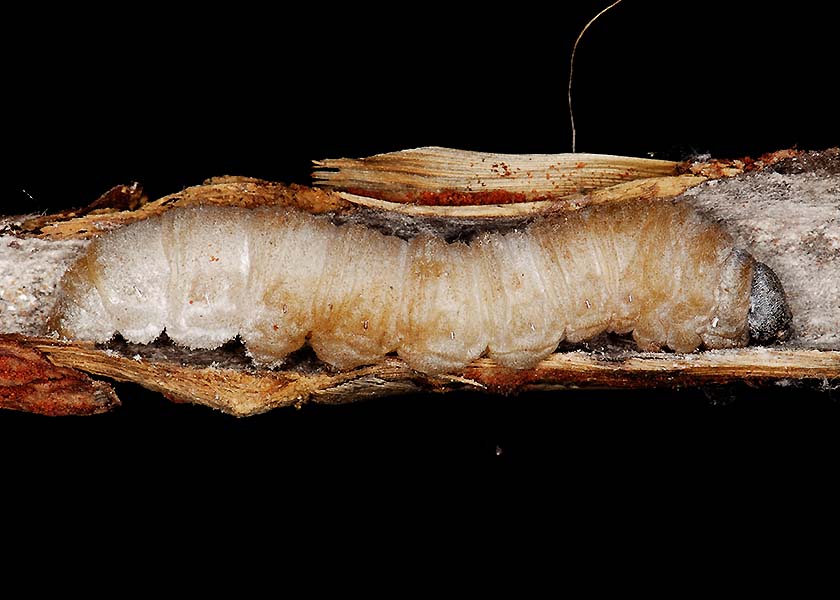
|
Last instar caterpillar was found in one of the tunnels. Excreting large masses of white powdered by the glands on the 10th and 11th segments, it is several days short of pupation. |
|
The photographs below are from 27-Apr-2008. Apparently, the skippers had a nice flight and their eggs were easy to find. |
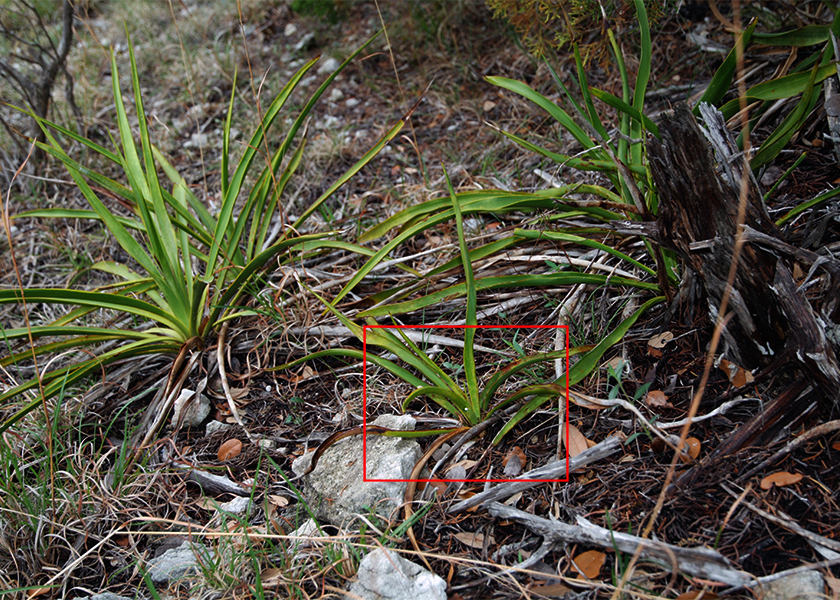
|
Eggs are typically glued to the leaves of small fresh plants, frequently close to the base and on the underside. An egg is greenish-white when just laid. It is easier to spot whitish eggs. Area framed red is enlarged below, however, even on this photo the egg is visible as a white dot. |

|
The egg still appears white at this magnification, but it actually is greenish, as seen below. |

|
The egg is oval, but it looks rounder when viewed from this angle. Micropyle is noticable as a small indentation in the center of the egg. The eggs stays green for a day after being laid. |

|
Within a couple of days eggs turns tan-orange. Smaller plants are selected for ovipostion, and in this nice group of plants, only the 3-leaved, smallest shoot got an egg. See red-framed area enlarged below. |

|
Orange coloration makes eggs less noticeable, since yucca leaves frequently have some browner spots on them. |

|
A larva is apparently developing inside the eggs, and a bubble of air is forming below the egg shell (whiter area) as a result of its metabolism. The oval shape of the egg is obvious in this view. |
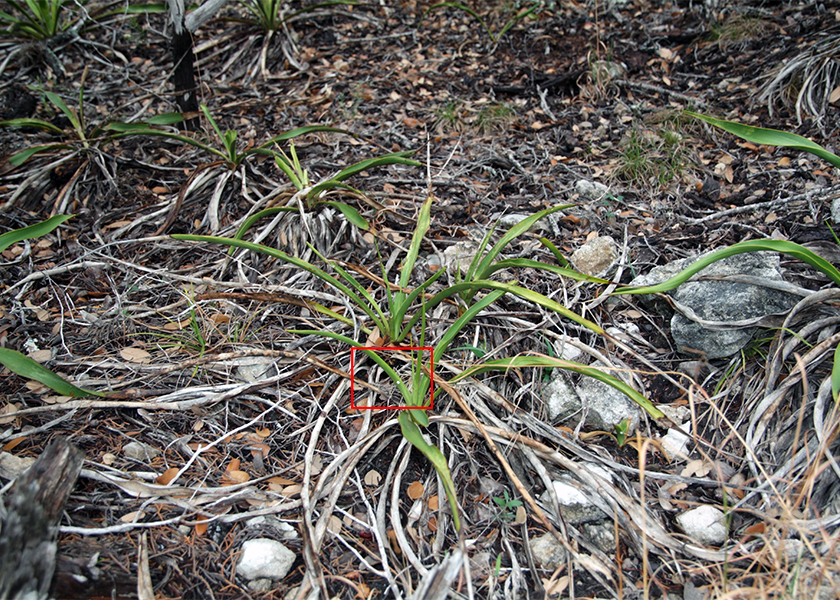
|
The eggs matures in about 11 days. Some caterpillars already hatched leaving egg-shells behind. The shells are probably the easiest to find, because they are white. |
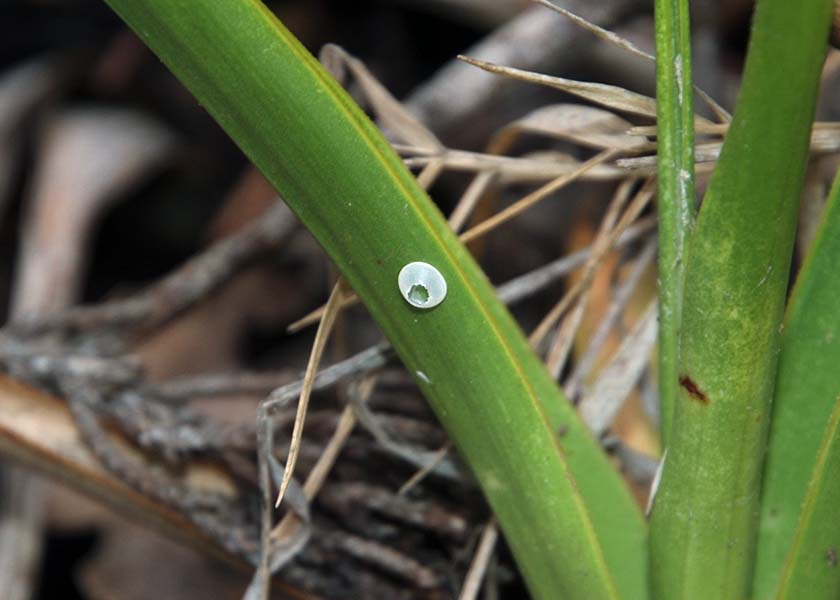
|
Larva chews an opening wide enough for the exit. The opening is in the center of the egg, right where the micropyle was. Egg-shell is translucent-white. By this non-colored white tone it is possible to tell M.streckeri egg shells apart from recently abandoned eggs of M. yuccae. M. yuccae egg shells are yellowish or brownish in color, not completely white. |

|
Egg laid a day ago. Still retains greenish color. |

|
Parasitized egg. It turns black. Inside, Chalcidoid parasite larvae are developing. Adult parasites typically emerge next season, when new M streckeri eggs are laid. |

|
Healthy egg is reddish for most of its development time. |

|
Fully matured egg. Dark caterpillar head and reddish body are seen through the semi-transparent shell. |
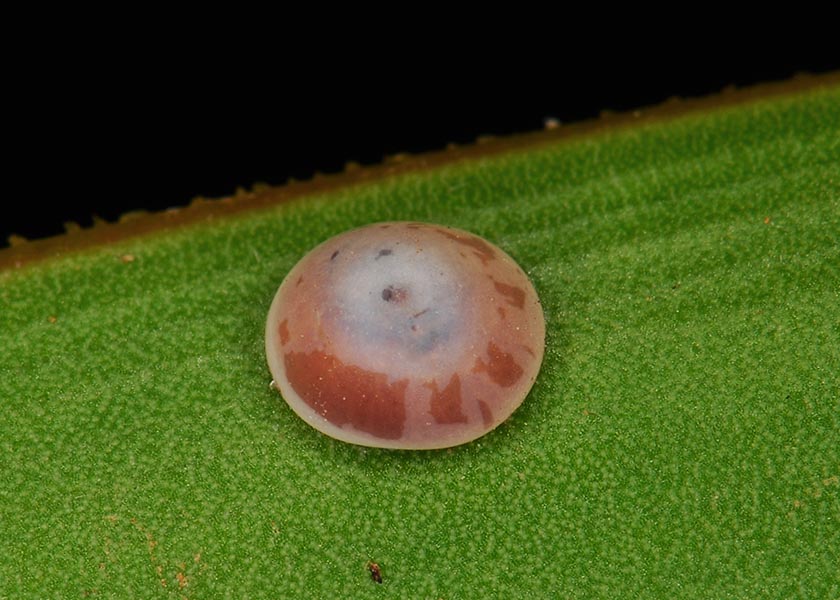
|
Egg a couple of days before hatching. The caterpillar is drying inside, with some areas of its body (more intense color) still stuck to the shell, while other areas (less intense color) are already separated by thin space filled with air between the body and the egg shell. |

|
The caterpillar is chewing its way to freedom. Brown head is visible through the exit hole. Black tip of madibula is on the left |

|
Egg shell. Note that it is white, non-colored. |

|
For comparison, Megathymus yuccae egg shell is less transparent and shows at least some off-white brownish tones. This one is from Okaloosa Co. FL. Not all M. yuccae shells are that distinctly colored and color fades with time, so caution is advised in making determinations. |

|
Freshly hatched M. strckeri caterpillar will travel down the leaf towards the center of the plant, where it will bore into the caudex and will feed inside, fully concealed within the plant. |

|
In the lab, however, the caterpillar will spend next several weeks inside this small piece of root. |

|
The larva placed into a tiny cavity made in the root, works on concealing itself by making a webbing over the entrance. |

|
In 24 hours (on 28-Apr-2008), large amount of frass coming out of the cavity indicates that the caterpillar took off. |
|
All images are © Nick V. Grishin |